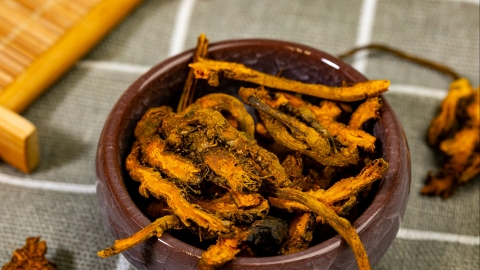What are the differences between Forsythia and Coptis?
Generally speaking, although both Forsythia (Lianqiao) and Coptis (Huanglian) belong to the category of traditional Chinese medicinal herbs used for clearing heat, and both have heat-clearing effects, they mainly differ in the following aspects: different properties and meridian tropism, different core therapeutic effects, different indications, different methods of use, and different applicable syndrome patterns. Therefore, they should be precisely selected according to specific needs. Detailed differences are as follows:

1. Different Properties and Meridian Tropism: Forsythia has a bitter taste and slightly cold nature, and enters the Lung, Heart, and Small Intestine meridians; its bitter-cold property is relatively mild. Coptis also has a bitter taste but is colder in nature, with significantly stronger coldness than Forsythia. It enters the Heart, Spleen, Stomach, Liver, Gallbladder, and Large Intestine meridians.
2. Different Core Therapeutic Effects: Forsythia primarily functions to clear heat and detoxify, reduce swelling and dissipate nodules, and疏散 wind-heat. It can both eliminate internal heat toxins and disperse abscesses and hard swellings. Coptis mainly clears heat and removes dampness, purges fire, and detoxifies, with a strong effect in clearing excessive fire from internal organs such as the Heart and Stomach.
3. Different Indications: Forsythia is mainly used to treat abscesses and toxic swellings, wind-heat common cold, initial stages of warm disease (warm illness), and painful or difficult urination. Coptis is commonly used to treat damp-heat diarrhea and dysentery, damp-heat jaundice, oral and tongue ulcers, and swollen gums.
4. Different Methods of Use: Forsythia can be decocted for oral administration or ground into powder for external application on abscesses. Coptis is primarily used orally by decoction and rarely applied externally.
5. Different Applicable Syndrome Patterns: Forsythia is suitable for exterior syndromes caused by wind-heat or internal accumulation of heat toxins. Even individuals with slightly deficient constitution but without obvious cold deficiency can use it cautiously after appropriate combination with other herbs. Coptis is only suitable for syndromes caused by excessive damp-heat or blazing real-fire. It is contraindicated for individuals with deficiency-cold syndromes of the spleen and stomach, or those without damp-heat or real-fire conditions.
When using Forsythia or Coptis, one must first identify their own syndrome pattern, and rationally select between the two based on their characteristics to avoid discomfort caused by mismatched herb properties. Additionally, dosage and duration of use should be strictly controlled to ensure safe and effective medication use.




